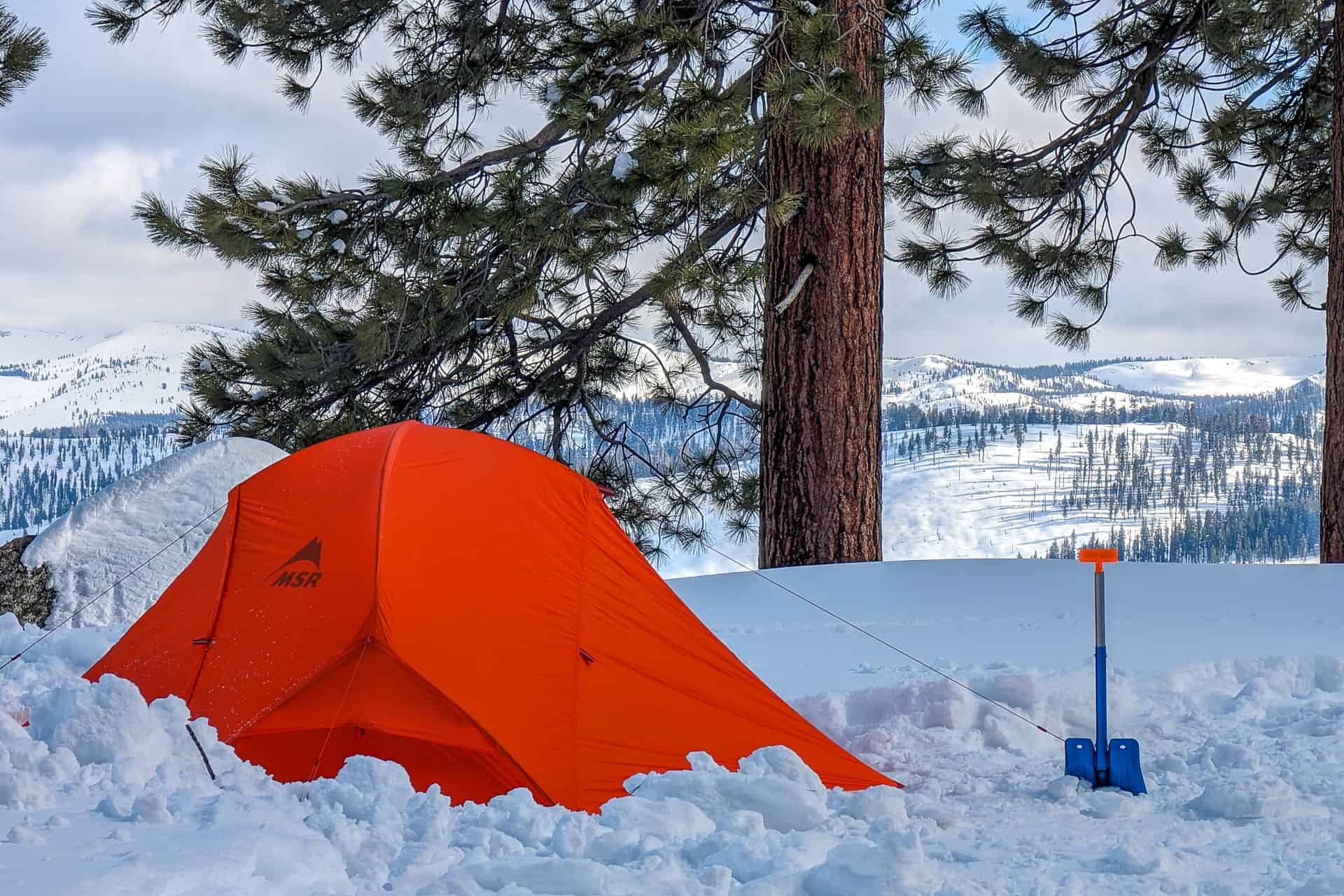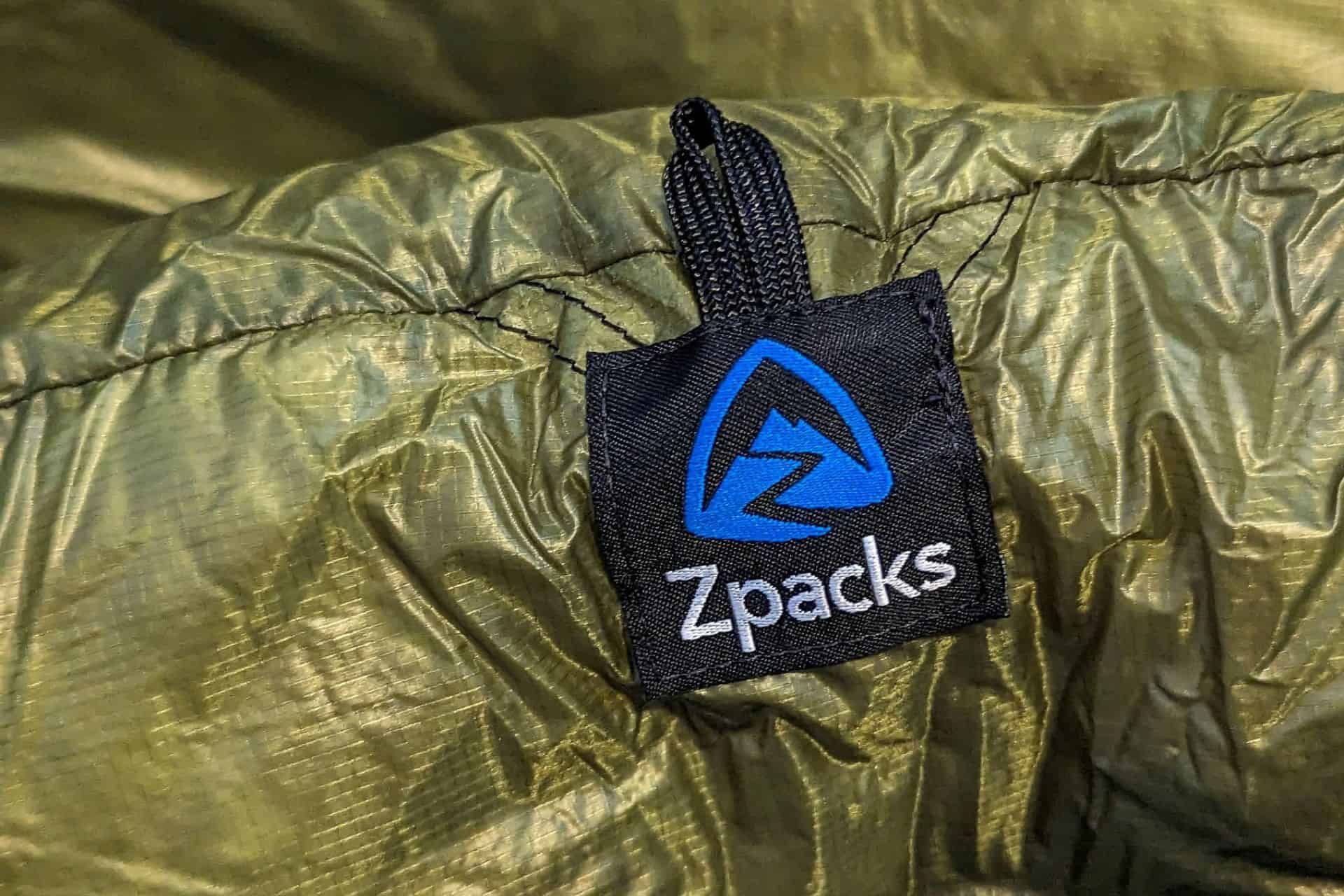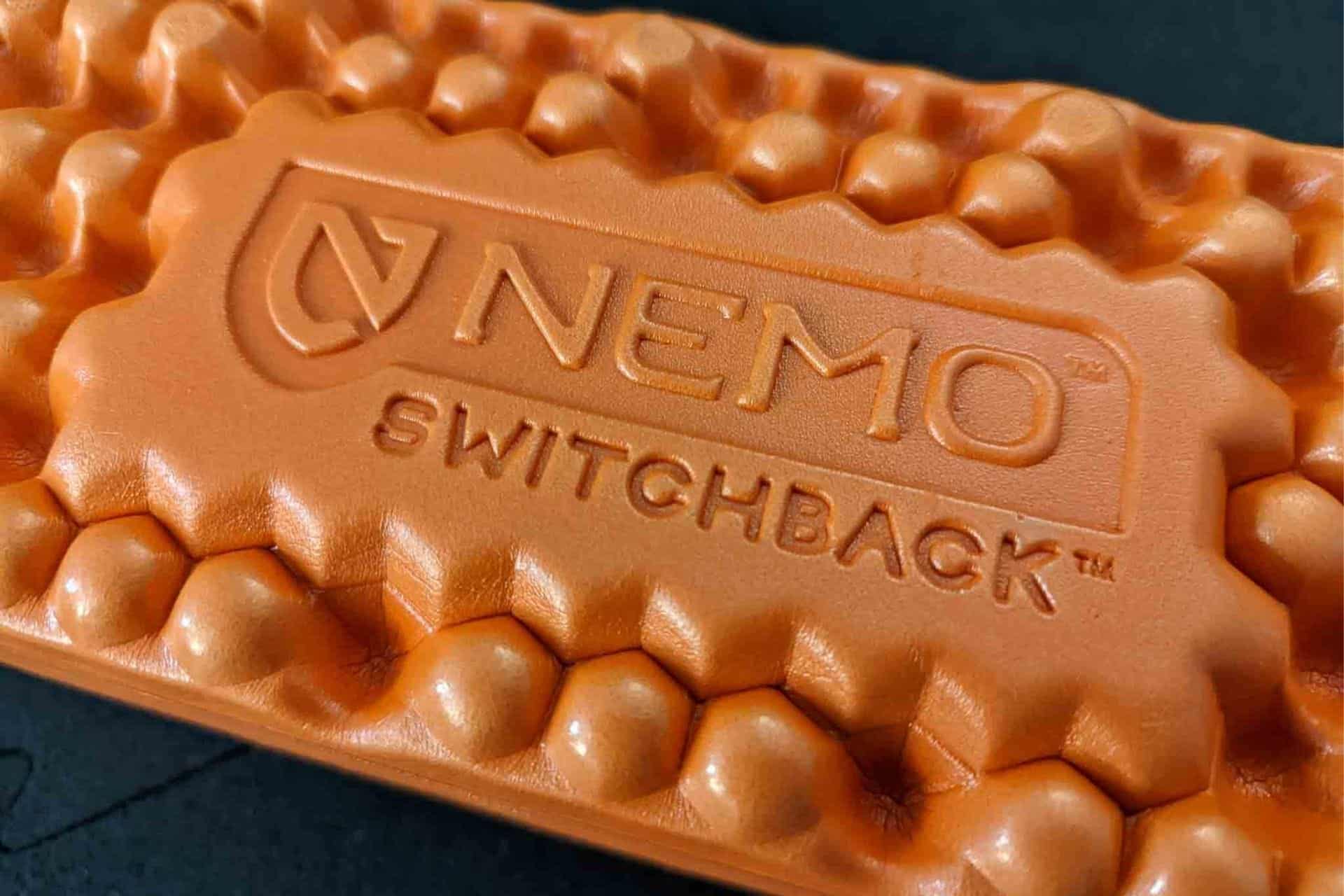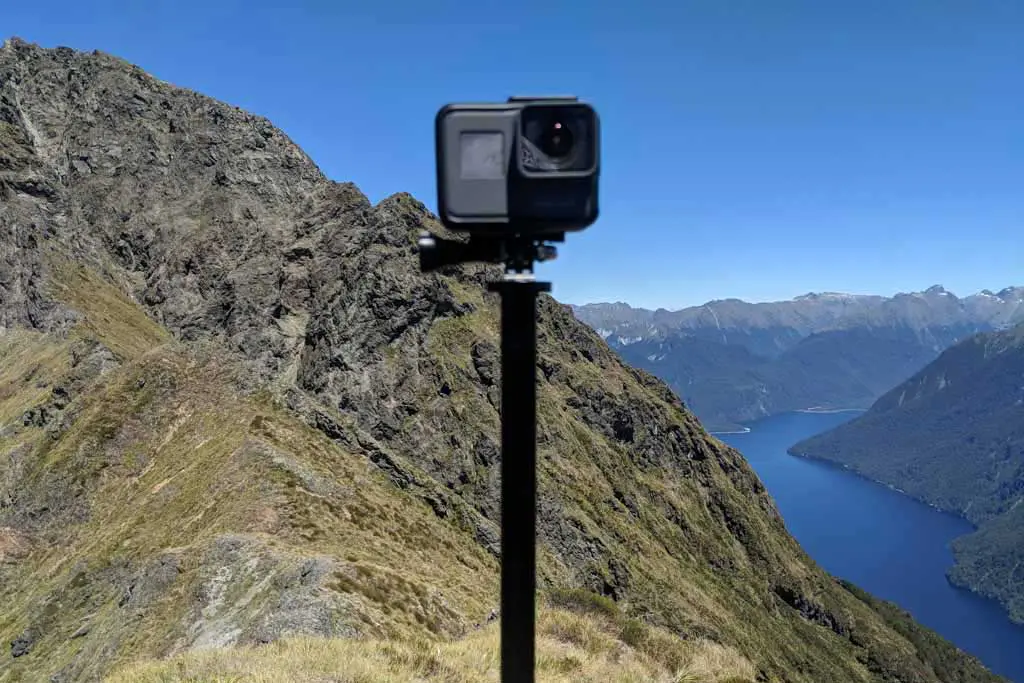Tarptent Dipole 1 DW Tent Review
The Tarptent Dipole 1 DW Tent is a lightweight, double-walled, two-person, non-freestanding shelter that can be set up with trekking poles and two stays included with the tent. There are two interior options, a mesh and a solid interior, with the solid costing $30 more and weighing 0.4 oz / 11 g less than the mesh option.
Tarptent also makes an ultralight version of this shelter, the Dipole 1 Li, and an ultralight two-person version of this shelter, the Dipole 2 Li. However, these versions are not double-walled, hence the DW in the name of the version described here.
I am nothing short of impressed. Here’s everything you want to know about the Tarptent Dipole 1 DW.

Pros and Cons

+ Double-wall design for better ventilation and condensation reduction
+ Fly can be used alone or with mesh or solid interior – interior can also be pitched without fly
+ Two doors, two vestibules, and struts at either end provide great liveable space for a single person and gear
+ Includes stakes needed for set up
– It might take some practice to set up efficiently
– On the heavier side for a single-person shelter available
– Pockets can’t accommodate much weight
– Securing interior
The Specs
- Capacity: 1
- Trail weight: 32.55 oz / 923 g (with the solid interior, folding struts, apex guylines, stakes, and bags)
- Doors: 2
- Freestanding: No
- Poles required: 2 trekking poles
- Fly weight: 17.05 oz / 483 g
- Mesh interior weight: 11.9 oz / 337 g
- Solid interior weight: 11.5 oz / 326 g
- Foldable carbon fiber strut weight: 0.7 oz / 20 g each
- Fixed length carbon fiber strut weight: 0.3 oz / 8.5 g each
- Stake weight: 1.8 oz / 51 g (total)
- Stake stuff sack: 0.2 oz / 6 g
- Tent stuff sack: 0.6 oz / 17 g
- Interior height: 43 in / 109 cm
- Floor width (tapered): 36 in ends, 28 in middle / 91 cm ends, 71 cm middle
- Floor length: 84 in / 213 cm
- Bathtub floor height: 6 in / 15.2 cm
- Packed size: 11 in x 5 in / 28 cm x 12.7 cm
- Fly material: 20D nano ripstop 100% silicone-coated polyester
- Floor material: 30D double ripstop 100% silicone coated nylon 66
- Fly zippers: YKK #3 Aquaguard waterproof
- Mesh: 15D nylon no-see-um mesh
- Solid fabric: 10D ripstop nylon
- Guyline/Cording: 2.5 mm reflective sheath with Spectra® core
- Stakes: Four 9 in / 22.8 cm Easton® Nano aluminum stakes
- Layout: Symmetrical
- Door closure: Zipper
- Open door securement: Magnetic
- Number of pockets: 4
- Colors: Green
- MSRP: $289 to $329 (depending on the strut and interior selection)
Photo Gallery












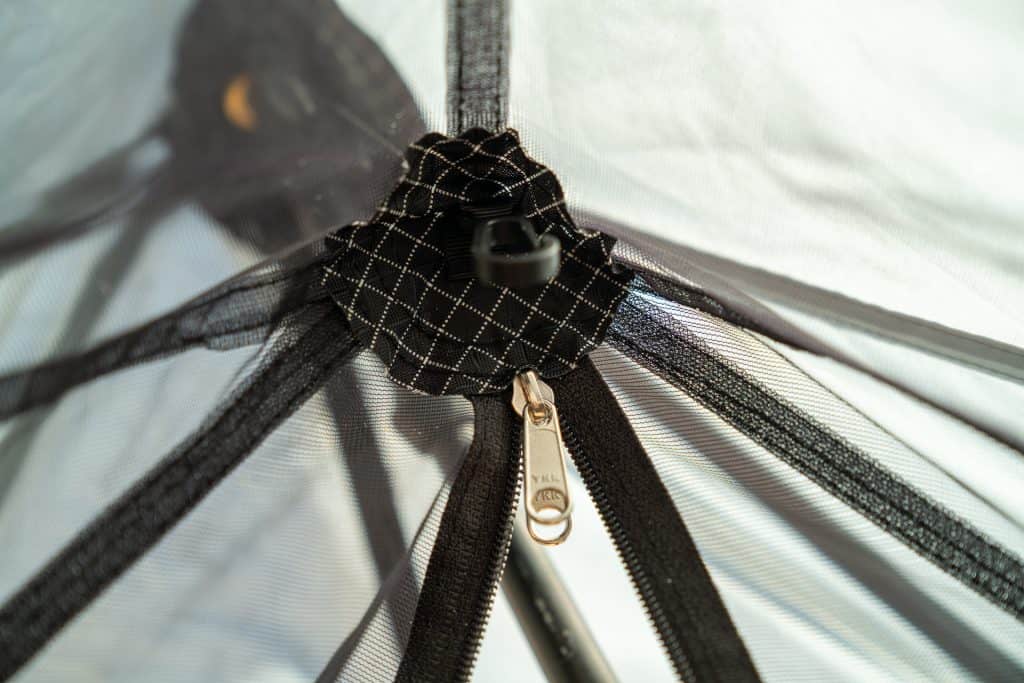





























Mesh vs. Solid Interior
The Tarptent Dipole 1 DW comes with either a mesh or a solid interior (or both). Either one can be pitched on its own or with the included fly. The interior can be easily changed out using clips attached to the fly.
You can leave the interior attached to the fly when setting up and packing the tent, or you can detach the interior and store it separately (if it’s raining, for example).
The solid interior will keep the interior of the tent warmer and will protect you from gusting wind, snow, or rain. The peaks of the solid interior – at the foot, head, and highest point – all have mesh for venting.
The mesh interior is 0.4 oz / 11 g heavier than the solid interior (11.9 oz / 337 g vs 11.5 oz / 326 g).
The Good
The Ventilation: The Dipole 1 DW has vents at both the head and the foot of the tent that can be opened to increase airflow. In addition to this, there are vents at the peak of the shelter – one on either side – at the top of each vestibule. If you reach all the way out the shelter door, it’s possible to access the vents from the inside. That said, the vents are designed to be able to be left open in the rain, so this may only be an issue in especially bad weather. Between the double walls and the vents, I don’t expect condensation to be much of an issue with the Dipole DW.
The Versatility: Because the Dipole 1 DW is a double-walled tent that is set up with trekking poles, you can use the shelter with no interior and bring only the fly for an ultralight shelter setup. Alternatively, if you only want to bring the interior (either mesh or solid), you can also set this up using trekking poles (without needing to set up the fly). Technically, you could say that it’s five shelters in one (if you get both interiors). Being able to
The Space: Bringing the Tarptent Dipole 1 DW is a single-person shelter that offers a surprising amount of liveable space. This is due, in part, to the struts installed at the head and foot of the shelter; these come in both foldable and fixed-length varieties (you’ll save 0.6 oz / 17 g with the fixed-length but you’ll likely have to store them vertically in your pack as they’re 18 in / 45.7 cm long). I’m 5’10” / 179 cm and can sleep comfortably on a 2.5 in / 6.35 cm sleeping pad without my head or the foot of my sleeping bag touching the sides of the shelter (and with some room to space).
The Stakes: Included with the Tarptent Dipole 1 DW are four, 9 in / 22.8 cm, Easton® Nano Stakes weighing 1.8 oz / 51 g. Most non-freestanding tents from cottage companies don’t include stakes (despite being required for pitching), so it’s much appreciated that Tarptent includes these with the Dipole 1 DW. The Dipole 1 DW is unique in that it only requires four stakes. That said, you can stake out the doors and the head+foot as well for a bit more stability and a tad more room.

The Okay
The Pockets: The Tarptent Dipole 1 DW has four interior pockets – one at each corner of the tent. They are rather wide and shallow and aren’t great for holding any larger items. Think of a sideways cellphone in each. Because the sides of the interiors (mesh or solid) are supported by the fly, the corners easily sag down when weight is placed in the pockets. However, you do have two whole vestibules for gear storage which is rare in a single-person shelter.
The Weight: The Tarptent Dipole 1 DW isn’t the lightest shelter available, but that’s not what it’s meant to be, either. It comes in at just over 2 lb / 900 g with a solid interior, folding struts, apex guylines, stakes, and bags. This drops to 1.83 lb / 830 g if you don’t count the stakes, bags, or apex lines. You can also save yourself an entire 0.6 oz / 17 g with the fixed-length struts instead of the foldable ones (I would go with the foldable ones). If you’re looking for a similar shelter but with less weight, you can check out the Dipole 1 Li (a single-walled Dyneema version of the tent).
The Set Up: The Dipole 1 DW isn’t overly complicated to set up; it only requires four stakes, after all. That said, the first couple of times I set up the shelter I found myself confused by the struts and the vents at either end. After a few rounds through the setup video, I figured it out. It also took me a bit of playing to get the tension right. Because there are only four stakes, when I find myself hammering them into hard ground (I managed to bend one), it’s a bit of a pain to adjust one to get a better pitch. It should also be noted that you can set up the exterior fly/tarp, take as much time as you need, and then set up the interior afterward. Yes, you can also leave them connected, but if you’re repeatedly setting up and breaking down in the rain, keeping them separate will keep your interior dry.

The Bad
The Fabric: I don’t know if this is more a commentary on the Tarptent Dipole 1 DW‘s polyester and nylon fly and floor, but after setting up the Dipole 1 DW in a particularly sandy spot, I’ve been unable to free myself of the sand. The fabric simply won’t let go of the sand and I’m probably going to have to set it up at home and hose it down to get it clean again. Again, I can’t say if this was a result of where the Dipole 1 DW was set up, of the fabric used, or some combination, or witchcraft, but I’ve never had sand/dirt stick to a tent the way my Dipole is not covered.
The Door Jamb: If you roll up and secure the Tarptent Dipole 1 DW fly, there is a magnetic closure along the seam used to hold the door open. These are on both sides of the tent on both sides of the fly and they are great. However, the interior door (on either the mesh or solid interior) is secured via a piece of plastic that is secured by looping a piece of elastic around it. I feel like I must be doing something wrong because it is not nearly as easy as I suspect it should be.
The Seam Sealing: The Tarptent Dipole 1 DW does not come seam sealed. The charge for Tarptent to seam seal the shelter for you ahead of time is $35. The charge for Tarptent to send you a kit to seam seal the tent yourself is $8. Seam sealing is the process of applying a sealant to the seams of the shelter (can I use “sealant” and “seams” in the definition of seam sealing?) to prevent moisture from entering via small holes or gaps left from the sewing process? It’s something you’re going to want to do if you plan on using your shelter in wet conditions. Perhaps there’s a good reason not to seam seal your shelter but I’m unsure what it could be.
Wrap Up
When I first got the Tarptent Dipole 1 DW, I was a bit skeptical. However, after seeing the versatility of the shelter, the liveable space, and some of the unique features Tarptent has tucked into this shelter, it’s quickly grown on me.
I’m excited to get the Dipole 1 DW out more, and I still need to see how it holds up in a storm. I’m excited to have the tarp-only option available (I bet I could sleep two under this configuration in a pinch) as well as the mesh or solid interiors available for use in conjunction or on their own.
Questions, comments, or personal experience with the Tarptent Dipole 1 DW? Leave a comment below, or get in touch and let me know! Check out the Tarptent Dipole 1 DW here.
Rating + Recommendation
Affiliate Disclosure: This page may contain affiliate links, which means I may receive small commissions for purchases made via these links at no additional cost to you. This helps pay the bills and keep the site up and running. Thank you for your support!

